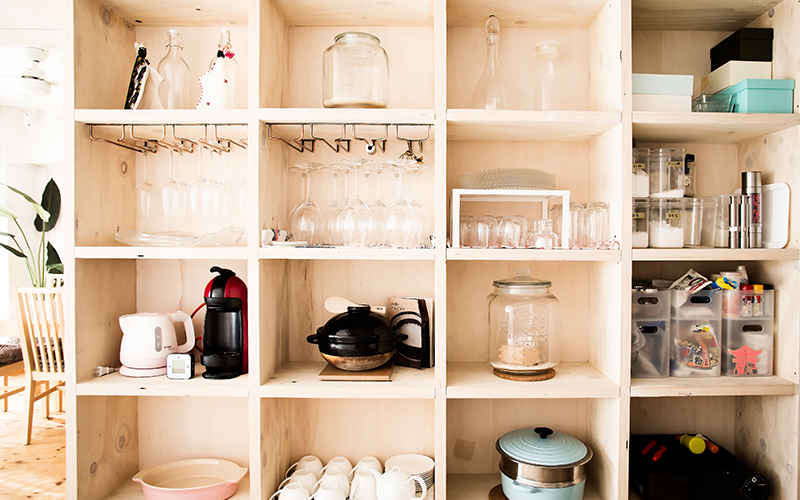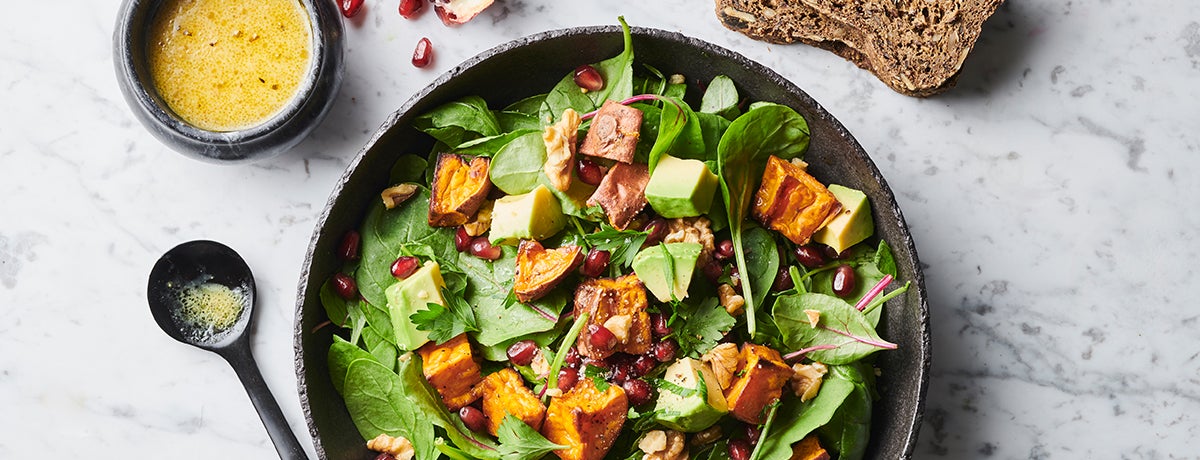Top Tips To Declutter and Organize Your Life
 ©Taiyou Nomachi
©Taiyou Nomachi
It’s not just for springtime. There’s no right or wrong time of year to tidy up your home. The best time to declutter and organize is whenever you’re feeling motivated to do it, whether that’s at the beginning of the year, when you’re moving, or even just on a sunny day. Use our tidying tips to help you sort your stuff quickly and efficiently and declutter your home.
The KonMari method
Ever since Marie Kondo — the Japanese queen of tidiness — came onto the scene, decluttering has become synonymous with tidiness. There are numerous books and TV series about the benefits of the KonMari method. Its strategy is simple. The goal is to only keep possessions that make us happy and bring us joy. Everything that doesn’t has to go.
According to Marie Kondo, a tidy house or apartment has a positive, liberating, and life-changing influence. She promotes decluttering in an effort to help lay the foundation for a tidy and organized future for everyone. Even when you don’t plan on having guests over, keeping your house tidy can do so much good for your life.
It’s not for nothing that people say a tidy house makes a tidy mind. Missing the focus to get started? Zinc and magnesium sometimes support increased mental focus! Try it out now.
Where the KonMari method differs from traditional tidying and decluttering methods is in the approach. It’s not about identifying what you need, but about identifying the objects that spark joy within you. If an object doesn’t make you happy when you’re holding it, then it absolutely won’t make you happier at the bottom of a drawer or cupboard. Get rid of it.
The KonMari method of storage is a multi-step process. Are you ready to get started?

Sort By Category
Before you can even start tidying up and decluttering, you first need to sort through your belongings and identify what you want to get rid of and what you want to keep. The best way to do this is to divide your items into different categories and start with the category that is the least emotionally charged.
Kondo recommends starting with clothes, then books and papers, and finishing the process with pictures. Getting rid of photos is the most difficult because they are so full of memories.
Do you still have an old, broken MP3 player? According to Marie Kondo, broken or items that no longer function should be thrown out immediately, because these objects can no longer fulfill their purpose or contribute anything positive to your life.
Divide the Categories into Subcategories
If your categories are too large, you may find yourself having trouble keeping track of everything, in which case subcategories can be extremely helpful. With clothing, for example, try dividing what you have into seasons by separating summer clothing and winter clothing. Then, go back and consider each subcategory individually.
Does It Spark Joy?
Ask yourself this question with every single object. Take it in your hands (how it feels is important, too) and ask yourself if this thing brings you joy or happiness. If you find the question too boring, you can also phrase it differently. For example, “Can I see myself with this object when I look into the future?” If the answer is yes, let it stay. If it’s no, throw it away.
It’s also important to remember that “throw away” doesn’t necessarily mean “throw it in the trash.” You can give many of the things you no longer need to friends or charities. It may not give you joy any longer, but there’s still a chance it can give someone else joy! And if you’re going to dispose of it, check whether it can be recycled.
Figured Out What to Keep? Now Start Organizing
With the KonMari Method, it’s important that every object has a designated place. Again, start by organizing what you have into categories. Objects in the same category should be organized in the same place.
If you’re surrounding yourself only with objects that make you happy, then you’ll find that you’re happier in everyday life.
Tips for Everyday Storage
It’s easier to face life’s challenges if you have a tidy environment to relax in at the end of the day.
However, using the KonMari Method to tidy up and declutter and organize takes time. Between all the other things going on in your life it can be difficult to find the time to sort through all your belongings so drastically. Instead, try starting slowly by organizing just one category each or every other day. Accomplishing just one thing a day will help you stay motivated enough to finish the project.
Obviously it’s not always easy to do everything you’d planned to do in a day. Life has a habit of getting in the way. The next time you’re feeling overwhelmed, how about taking the time to work up a sweat? Exercise can reduce stress!
Declutter and Organize In 7 Steps
Day 1 & 2: Clothing
Start by organizing the current season’s clothing. Deciding what swimsuits you’d like to wear next summer while it’s still freezing cold outside is not exactly the easiest thing to do! On the other hand, you’ll also find it’s hard to imagine that a big wool sweater could bring you a spark of joy when it’s too hot to sleep at night.
Start by choosing the clothing you could wear right away. Once you’ve got the hang of it, it will be easier to start going through clothes for other seasons.
Then, make a pile of all your remaining clothes either on the floor or on your bed. When you see the mountain of clothes in one place, that’s when you really get a chance to see what you have. Most likely, you’ll find things in the back of your closet you’d completely forgotten about!
- Sort this big pile of clothes into two smaller sections: what you’re keeping and what you’re not. As always, try to be realistic. Sit with the piece of clothing for a moment to see if you really want it or will miss it. Imagine yourself wearing it in the future. Can’t picture it? Thank the clothing for its service, then let it move on to a place where it’ll get some great use. The nice thing about clothes is that there are so many ways and options to give away what you no longer want. In the deep of winter, donations of warm clothing are always appreciated.
Day 3: Bags
After the clothes, it’s time to sort through your bags. Every kind of bag is up for grabs here. Handbags, backpacks, purses, sports bags, cloth shopping bags, suitcases, briefcases, and even any smaller plastic bags and packaging that you may have lying around.
- Throw away everything that no longer makes you happy or that you won’t use anymore. Including the packaging.
- Don’t forget to empty your bags and pockets too. There are often lots of things inside of them that we forget about. Put these things in their place or throw them away.
Day 4: The Kitchen
During the holidays, the kitchen is in full swing. It can get chaotic real fast. So the beginning of the year is the perfect time to take care of it. But you can really declutter and organize it any time of the year — whenever is best for you.
- Don’t confuse your countertop with a cabinet. Put away appliances and utensils that you don’t use every day.
- Are you sure those madeleine molds you’ve barely used really bring you joy? Perhaps your friend that bakes a lot would find more joy in them than you. Go through each kitchen item and decide if it’s something you’re really planning on using, or something someone else might enjoy more.
- Then head to your pantry and comb through all the food that’s been sitting in there for ages. That cereal from 2011 has long since passed its expiration date. You need to chuck it.
Before you start tossing stuff in the bin, know that a “best by” or “sell by” date isn’t an expiration date, so do use your judgement and common sense. In most cases, that’s just the date the store or manufacturer needs to get rid of the product. Food can remain edible for some time after this date as long as it’s been stored properly. With certain foods, like meat, it’s better not to take the risk at all, but with other foods, like yogurt, you can use your sight and smell to determine if it’s OK to eat.
- Get rid of the food that you don’t need. Or, finally make the effort to cook a dish that uses those ingredients. If you want to use something more often, try putting it in a prominent spot in your pantry. That way you see it all the time and are constantly reminded to use it.
If you’re in need of some new dinner ideas, check out our recipes. They’re quick and easy to prepare, yet still totally delicious.

Day 5: Your Wallet
Though a wallet isn’t something we normally think of to declutter and organize, it needs a little love and care as much as your home does.
- Throw away the receipts you don’t need anymore. Ditto expired loyalty cards.
- Then, organize your cards by how frequently you need them. Put the cards you use every day in a front pocket that’s easy to reach and the ones you use less often in a back slot.
Day 6: Mail and Paperwork
Do you have an ever-growing pile of flyers, ads, and pamphlets on your table? You can sort through that stack in no time.
For example, you probably already know the menu of your favorite pizza place by heart and have their number saved in your phone. And, worst case scenario, they most likely have a menu online, too. You have no excuse not to throw the paper menu into the recycling bin. Go on, do it now. We’ll wait.
Have you done it yet?
Day 7: Digital
Material possessions are not the only things that burden us. We are constantly stacking and storing tons of information with digital technology. After all, there’s no lack of space in the cloud. Though they might not take up room in your home, these things clutter our mind with useless information. Time to declutter and organize them!
- Delete the apps you don’t use or use very little. Or switch to using your browser instead of an app, so it takes longer to load and you’re less inclined to use it as often.
- Go through your contacts and delete all the contacts you don’t need anymore. Let’s face it, you probably have a lot of numbers you never use on your phone.
- If you’re not reading some of those newsletters that you subscribed to, get rid of them. They’re just making your inbox more chaotic than it needs to be.
- If you’re looking for a more concrete way to get away from screens, check out our tips for a more analog life!
Declutter and Organize: Our Conclusion
- A tidy home can help you achieve your goals and complete your daily tasks more easily.
- Before tidying up and decluttering, overview what you own and sort it. Identify what you want to keep and what you want to throw away.
- By doing a little decluttering and tidying up every day, category by category, you’ll avoid feeling overwhelmed.
- Don’t forget to sort through your digital stuff. There too, you pile up a lot of useless objects.
More Facts from foodspring:
- Make your to-do list work for you with these 5 strategies
- Self Love: Understand what it is, why it’s important, and find our 7 tips to boost yours!
- How to set up a home office in 7 steps
Sources for this article
We at foodspring use only high-quality sources, including peer-reviewed studies, to support the facts within our articles. Read our editorial policy to learn more about how we fact-check and keep our content accurate, reliable, and trustworthy.
- Kondo, Marie (2014): The Life-Changing Magic of Tidying: A simple, effective way to banish clutter forever. Vermillion: London.

































